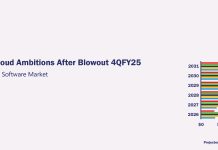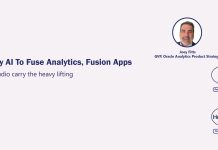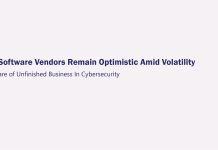Oracle is focusing on new customers and its fast-growing Cloud applications business to help drive its analytics offerings, which have been streamlined and repackaged to sharpen its key differentiating factors.
By streamlining its different business intelligence and analytics offerings under the new banner Oracle Analytics Cloud, the vendor is renewing its efforts to retake an upper hand in one of the hotly-contested software markets.
Even though Oracle has made significant inroads into the Cloud by winning global customers with its Fusion ERP Cloud and thousands of midmarket accounts with NetSuite apps, the vendor has been working behind the scenes to reboot its business intelligence and analytics strategy.
During a two-day event in Skywalker Ranch (a movie production retreat built by director George Lucas), T.K. Anand, senior vice president of AI, Data and Analytics at Oracle, acknowledged a number of missteps that left customers and partners confused, but he said it’s time for a new beginning as Oracle is committed to rebuilding its BI and analytics offerings with augmented, integrated and collaborative capabilities.
Oracle is injecting artificial intelligence, machine learning, natural language processing and other capabilities to deliver better analytics products, decision support and business outcomes especially in high-impact data discovery and reporting. Many of these breakthroughs come pre-built with Oracle Analytics Cloud, requiring no additional tools and add-ons from third-party providers.
More importantly, Oracle has simplified pricing of Oracle Analytics Cloud with a list price of $20 per user per month, or $2,000 per CPU license for unlimited number of enterprise users.
What Oracle aims is to start positioning its analytics solutions as Cloud apps with regular updates, pay-as-you scale pricing, in addition to domain expertise and channel support from key partners such as Deloitte, KPMG, and PWC.
Another major selling point is to ride on the ubiquity of the Oracle database, which is found in many popular applications from Oracle and other vendors. For example, Oracle Analytics Cloud can easily integrate data sources from Slack, Microsoft Teams, WhatsApp and others. Additionally, Bruno Aziza, group vice president of Oracle Analytics, said the strengths of Oracle Analytics Cloud stem from its ability to integrate widely-used applications like Dropbox, G Drive and Salesforce.
That results in faster rollout of analytics projects and global implementations among existing and net new Oracle customers that invariably will draw from multiple data sources and applications in order to establish the insights, dashboards and reports necessary to drive business value.
Though Oracle continues to support existing OBIEE and Hyperion Essbase customers with their Cloud migration plans, Aziza said the new positioning of Oracle Analytics Cloud will attract many users that have had little exposure to its legacy analytics offerings because of its ease of use, simple pricing and step-by-step destination guides that speed up their learning curve. Another breakthrough will follow later this year when Oracle starts shipping Oracle Analytics Server, which replaces OBIEE; and Oracle Analytics for Applications including Oracle Fusion ERP and Oracle Fusion HCM (due out in 2020).
Steve Miranda, executive vice president in charge of Oracle applications development, said in a separate briefing that Oracle Analytics Cloud will be strategically important for thousands of its Cloud applications customers as a standard data warehouse application, enabling them to take full advantage of readily accessible analytics cloud services from the same user interface as they run a host of apps for mission-critical functions like customer management and financial planning.
In its fiscal 2019, Oracle saw a 32% jump in Cloud applications revenues from its Fusion ERP, HCM and NetSuite applications, helping its total applications revenues achieve a 6% rise to reach $11.5 billion for the year. More recently, Oracle’s latest Cloud services and support revenues grew 3% in its first quarter of fiscal 2020 with increased momentum for its Cloud-based ERP, HCM and EPM products. Larry Ellison, its CTO, said during the latest earnings call that companies such as Express Scripts have opted to replace their legacy Hyperion products with Oracle Cloud EPM.
The momentum of fast-growing Cloud applications will inevitably cast a halo effect on complementary products like Oracle Analytics Cloud. The issue is whether Oracle Analytics Cloud will be able to handle the onslaught of demanding use cases for on-demand reporting and executive information dashboards in the modern era of melding real-time transactional and historical analysis.
Some Oracle customers are cautiously optimistic. Conny Bjorling, head of enterprise architecture of Skanska, said that is precisely the reason it started picking up Oracle BI Cloud Service in 2014 in its pursuit of a holistic decision-support strategy that melds analytics and applications in a cohesive fashion. The introduction of Oracle Analytics Cloud is a step in the right direction for his team to tackle the analytics challenges at the highly-decentralized Swedish construction company with $16 billion in revenues and 130 years of history of building massive projects like the new spaceship headquarters of Apple in Cupertino, CA.
While Skanska runs Oracle Cloud applications for HCM and ERP functions, it still falls short of its goal of driving timely insights through these apps because of a lack of a common reporting and visualization tool. Bjorling expects Oracle Analytics Cloud to deliver that last-mile intelligence because of a shared data and semantic model in cases such as risk and compliance.
With ready access to supplier and human resource data, Oracle Analytics Cloud will be able to help Skanska generate insights and identify suppliers, entities and employees that also get flagged on global sanctions lists from third-party sources like Dow Jones, Bjorling said. Currently, hundreds of Oracle Analytics Cloud users at Skanska are capable of drawing valuable conclusions by correlating weather data and injury reports to ensure its construction projects are meeting the highest safety standards.
Customers said the ability to fit Oracle analytics products into different environments like Microsoft SQL Server and Salesforce also makes it appealing.
Valentino Hafalia, vice president of financial planning and analysis at Western Alliance Bank in Phoenix, AZ, said Oracle Analytics Cloud can handle a multitude of reporting requirements up to 65 in the case of the regional bank that faces no shortage of rules and regulations, whereas other analytics tools are more one-dimensional in nature. “Tableau is very good at visualization, but we can’t use it in another setting,’’ Hafalia said.
As the BI and analytics market kicks off another round of consolidation, Oracle’s renewed push in the BI and analytics market underscores how incumbents are banking on price, availability and emotional element to bring Cloud analytics to the masses. What’s important is the trend that Oracle now appears to be more interested in acquiring new ones for Oracle Analytics Cloud than relying on the recurring revenue streams of its existing products like OBIEE and Hyperion Essbase.
Oracle is not the only analytics vendor revamping its offerings. SAP is putting half a dozen products like BusinessObjects, Lumira and others under the SAP Analytics Cloud umbrella, while Salesforce is retooling its analytics strategy by paying $15.7 billion for Tableau, its biggest acquisition that will help drive sales of its current analytics offerings Einstein and Wave. Google, after hiring Thomas Kurian away from Oracle, recently announced a $2.6-billion purchase of Looker in its first move to jumpstart its Cloud operations.
Unlike those incumbents or for that matter any Hollywood blockbuster that often turns to sequels and trilogies for minting new money from old ideas, Oracle Analytics Cloud appears to be doing everything possible to go after a galaxy of net new opportunities that are not far away.
| Customer | Industry | Empl. | Revenue | Country | Vendor | New Product | Market |
| Adventist Health | Healthcare | 35000 | $3.60B | USA | Oracle | Oracle Analytics Cloud | Analytics and BI |
| Arcadis | Construction and Real Estate | 27000 | $3.40B | Netherlands | Oracle | Oracle Analytics Cloud | Analytics and BI |
| Hertz Corporation | Leisure and Hospitality | 37000 | $8.80B | USA | Oracle | Oracle Analytics Cloud | Analytics and BI |
| QMP Health | HealthCare | 200 | $60.0M | USA | Oracle | Oracle Analytics Cloud | Analytics and BI |
Source: Apps Run The World, September 2019






